Introducing WATMO: Inspiring Curiosity and Careers in Science
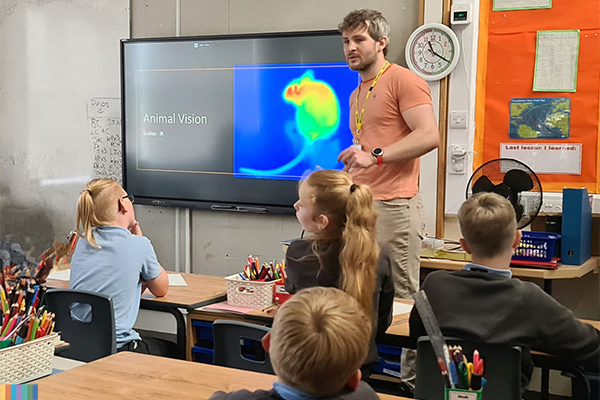
4wardFutures, in collaboration with the University of Liverpool, is thrilled to announce the launch of the 'What Are Things Made Of?' (WATMO) project. Led by Mark Waters, this exciting initiative, funded by UKRI through the Spark Award, aims to connect primary school pupils with scientists, apprentices, and engineers, exploring the big questions that captivate young minds.
Ever wondered what the Universe is made of or how we can combat plastic pollution with innovative technologies? WATMO is here to provide answers and spark the imagination of young learners. Through a cross-curricular and engaging campaign, we seek to inspire curiosity, shed light on cutting-edge research in their region, and unveil the vast array of careers available to them.
Recently, the first in-person workshops took place at St Benedict's and St George's primary schools in Warrington and Wallasey. These workshops were expertly crafted and delivered by physics PhD students from the University of Liverpool and Liverpool John Moores University, affiliated with the LIV.INNO program.
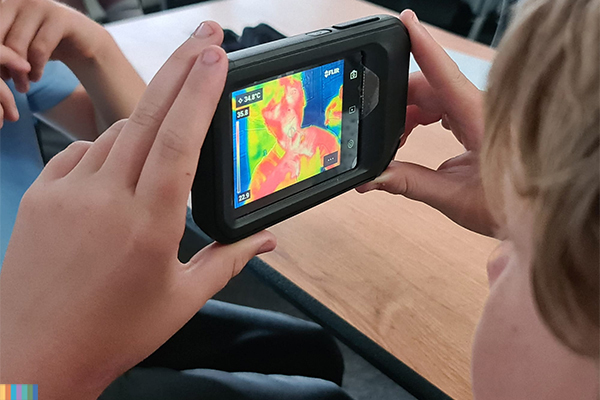
The pupils delved into the fascinating world of x-rays and other invisible wavelengths of light.
Co-founder and trustee chair Phil Atkinson said, "We're focused on expanding opportunities to young people currently underserved and overlooked as future scientists and innovators. It has been great working with Dr Hill and Liverpool's PhD students on this project, their passion and professionalism has been greatly appreciated by us and the pupils they have worked with".
He continued, "A key point we want to explore is that a university education is not the only pathway to a career in science or research, it certainly wasn't my route to STFC Daresbury Laboratory. I work daily with apprentice engineers, who are forging their futures in accelerator physics. A key part of WATMO will be linking these apprentices up with PhD students and academic staff to co-design and co-deliver workshops in schools.”
Dr Alexander Hill, who coordinated the workshops, expressed his enthusiasm, saying, "What I really like about WATMO is that it supports researchers in developing their own voice in outreach. Plus, the pupils' reactions remind them of how amazing their research truly is."
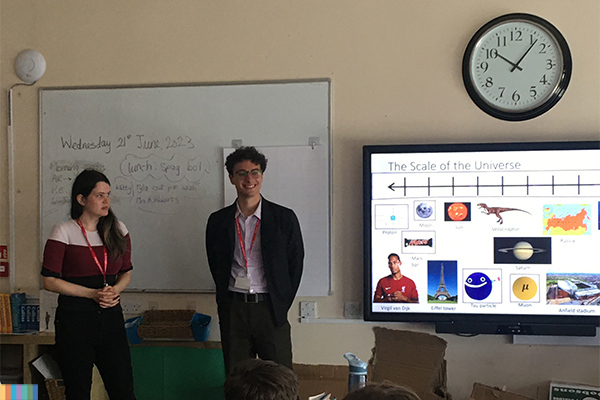
LIV.INNO students Katie Ferraby and Andrea Sante took the pupils on a tour of the smallest and largest things in the Universe.
At St George's, Katie Ferraby, a PhD candidate in particle physics at the University of Liverpool, took the pupils on a captivating journey through the Universe, exploring everything from minuscule particles to colossal stars. "It was a very rewarding experience that made me want to get involved in more outreach," she shared.
Meanwhile, at St Benedict's, accelerator and medical physics PhD students from the QUASAR research group delved into the fascinating world of x-rays and other invisible wavelengths of light. Rupesh Ghagi, reflecting on the workshop's success, expressed his delight at the opportunity to engage with the UK education ecosystem.
“Inspiring curiosity, guiding discovery, and then creating ‘aha!’ moments are a simple but powerful means of helping kids develop intrinsic motivation to learn” he said. “This will increase the number of pupils considering STEM higher education and careers.”
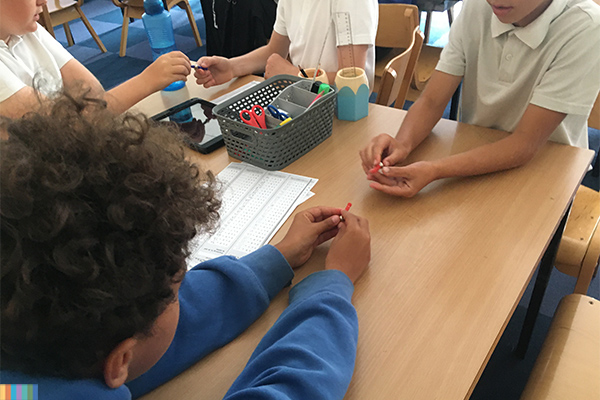
The number of pupils aspiring to pursue a career in science jumped from two to twelve, after the workshop.
The impact of these workshops on the pupils was remarkable. At St George's, the number of pupils aspiring to pursue a career in science jumped from two to twelve after the workshop. "This is the best science class I have ever done!" exclaimed one excited pupil.
Looking ahead, the partnership between the pupils and researchers will continue to flourish. They will participate in webinars with inspirational researchers and embark on an art project based on the research that inspired them the most. Their artwork will be proudly displayed in a virtual gallery, shared with the world.
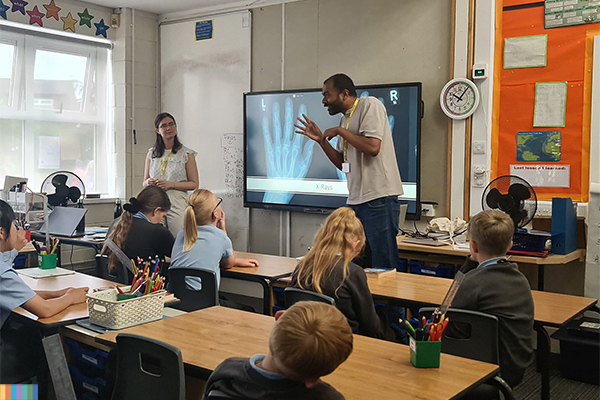
LIV.INNO students Lauryn Eley and Rupesh Ghagi inspired the pupils with their workshop titled ‘What is light made of?’.
WATMO is igniting curiosity, empowering young minds, and paving the way for future scientists, engineers, and innovators. Stay tuned for more incredible updates as the project unfolds, and join us in celebrating the exciting journey of discovery and learning ahead!
The St Benedict's workshop, titled 'What is light made of?', was created by Lauryn Eley, Rupesh Ghagi, and Dr Alexander Hill.
The St George's workshop, titled 'From stars to particles – a tour of the smallest and largest things in the Universe’, was created by Katie Ferraby, Andrea Sante, and Dr Alexander Hill.